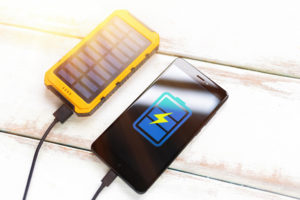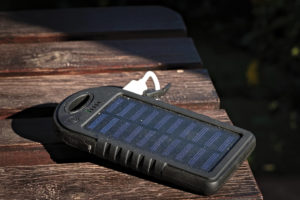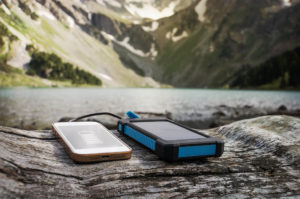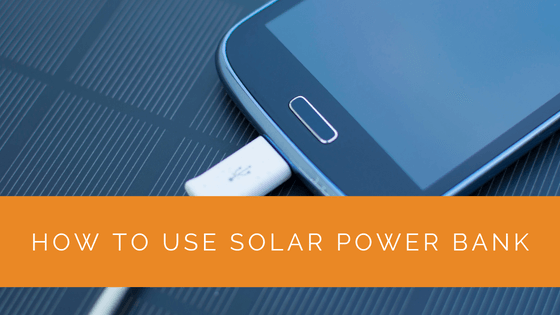The global demand for solar power banks is rising, and for good reason. These portable chargers, harnessing the sun’s power, are becoming indispensable for travelers and outdoor enthusiasts. This guide will delve into the essential know-how for effectively using a solar power bank. Whether you’re new to the world of solar technology or looking to maximize the efficiency of your existing device, this article will provide you with clear, knowledgeable, and confident insights to keep your devices charged and your solar power bank in peak condition.
Before we dive into the details of charging, using, and maintaining your solar power bank, the first step is to consult the user’s guide. While these devices are user-friendly, it’s crucial to understand their operational nuances and capabilities. So, let’s embark on this journey to harness the sun’s power and ensure your gadgets stay charged wherever your adventures take you.
Contents
- 1 Key Takeaways
- 2 Read the User’s Guide
- 3 Charging the Power Bank
- 4 Using the Power Bank to Charge Devices
- 5 How to Know When My Power Bank is Fully Charged?
- 6 How to Keep Your Power Bank in Good Working Order?
- 7 How Long Do Solar Power Banks Take To Charge?
- 8 Is it Possible to Use my Phone while the Power Bank is Charging it?
- 9 Precautions to Take When Charging Cell Phones Using Power Banks
- 10 Expert Insights From Our Solar Panel Installers About Using Solar Power Banks
- 11 Parting Note
Key Takeaways
- Reading the user’s guide for your solar power bank is essential to understand its operational nuances and capabilities, ensuring you use it effectively.
- The number of solar panels on your power bank determines how well it can charge using sunlight, with more panels providing better charging capabilities.
- To keep your power bank in good working order, avoid overcharging, keep it within the ideal temperature range, use a short-length USB cable for charging, and store it at 50% capacity when not in use.
Read the User’s Guide
First and foremost, just like any technological purchase, you should read the user handbook. Even though power banks are simple to use, and you may wish to pull them out, be cautious.
Ask yourself simple questions like, “How do I maintain my solar power bank’s battery capacity, efficiency, and technical capability?” The user handbook has all of the operating instructions.

Charging the Power Bank
You may constantly recharge your power bank using two different sources: electricity and the sun. The number of solar panels on the power bank will give you an idea of how well it will charge in strong direct sunlight.
Suppose there’s only one solar panel on the power bank’s face. In this circumstance, charging your power bank using sunlight will likely be a backup power source rather than your regular electricity supply source.
In other words, don’t anticipate power banks or solar chargers to be charged up after a few hours in a safe and bright spot. It’s more probable that the equipment will occasionally rely on power outlets to recharge itself.
Conversely, if you have a power bank with a lot of monocrystalline panels, your battery bank should be able to be charged entirely by the sun’s energy.
Using the Power Bank to Charge Devices
It would be best to charge your gadget with your solar power bank once fully charged. To accomplish this, connect the solar power bank to your charger’s USB outlet and plug the other end into your device.
Look for multiple USB ports on the surface area of your power bank if you want to charge multiple electronic devices simultaneously. The amperage output of your ports is something to keep in mind.
Check to see if the charging ports you’re using to charge your phone are just 1 amp. 2 amps are too fast for phones, which may shorten their battery life over time. To learn more about this, consult the user manual.

How to Know When My Power Bank is Fully Charged?
A light indication on power banks usually indicates how well-charged they are.
- 4 Lights = 95% charged
- 3 Lights = 75% charged
- 2 Lights = 50% charged
- 1 Light = 25% charged
Because most power banks do not provide 100% readings for security purposes, you mustn’t overheat your power bank. Ensure you replenish your power bank with enough power before it runs out.
When a power bank is entirely depleted, it takes more energy to get it going again than when a solar power bank is charged from 50%.
How to Keep Your Power Bank in Good Working Order?
Purchasing a high-quality solar power bank might cost hundreds of dollars. You will benefit most from your investment if you maintain it appropriately.
The following are four guidelines for making your solar power bank work efficiently:
- It should not be overcharged
- Keep it cool; any significant increase in temperature may shorten the life of your power bank’s battery. The ideal temperature range is 77°F to 86°F.
- A short-length USB cable can be used to charge your mobile phone
- If you aren’t using it, charge your solar power bank to 50% capacity and store it
How Long Do Solar Power Banks Take To Charge?
The amount of solar panels on your power bank determines how much energy you can retain. The photovoltaic cells in a solar panel convert sunshine into electricity; therefore, the more panels you have, the sooner it will charge.
A solar power bank with a capacity of 25,000mAh may be charged by the sun alone for about 25-50 hours. This assumes that the weather is suitable, i.e., as much direct sunlight as possible with no overcast.

Is it Possible to Use my Phone while the Power Bank is Charging it?
You may charge your solar power bank while using your phone. In most cases, though, this leads to the battery being in series or line with the phone. This results in a considerable drain of your phone’s battery capacity, leading to overheating and battery damage.
This is not a good idea. Do it only if you have no other option. Discover what your manufacturer suggests by reading your manual. They usually know how to utilize a solar power bank to its full potential.
Precautions to Take When Charging Cell Phones Using Power Banks
Despite their size, solar power banks are complicated devices that incorporate various electronics in a tiny space. They should not be discharged and charged immediately, especially when using solar power.
Most manufacturers warn consumers against solar charging their mobile gadgets when using solar power banks in direct sunlight.
This may be acceptable for solar chargers that do not have a battery pack. However, it is not recommended that solar power banks charge the solar panels while a phone is charged.
The solar power bank must not be exposed to water spillage or submerged in water due to all the wiring involved.
This is even more crucial when mobile phones are being charged and the current moves through a circuit. Water-resistant power banks may be exempt, but they should still be kept from water.
Most solar power banks have an electrical sensor that interrupts the circuit and turns off the charging when the battery reaches 100%. However, after the power bank is fully charged, it is recommended that you unplug it and turn off the power button.
Always attempt to keep your solar power bank at least 50% charged. A fully charged power bank will ensure your phone is charged at the fastest possible rate.
Avoid storing a power bank idle for long periods, which can shorten its longevity. Discharging and charging your solar power bank is a good idea even when not in use.
Expert Insights From Our Solar Panel Installers About Using Solar Power Banks
Solar power banks are a game-changer for travelers and outdoor enthusiasts. They provide a reliable, eco-friendly solution to keep your devices charged without relying on traditional power sources.
Senior Solar Installer
Understanding the operational nuances of your solar power bank, such as avoiding overcharging and maintaining the right temperature, is crucial for maximizing its efficiency and lifespan.
Lead Solar Technician
The number of solar panels on your power bank significantly affects its charging capability. More panels mean faster charging and better performance, especially in direct sunlight.
Chief Installation Engineer
Parting Note
With the burgeoning renewable energy and solar power potential around the country, solar power banks are typically highly durable and weather-resistant, making them long-lasting and cost-effective.
Using the sun’s direct light hitting a power bank to charge is a sustainable and environmentally friendly way to ensure your device is always charged.
Understanding how to employ a solar power bank will make your off-grid excursions more enjoyable. And in some circumstances, it could even spare you a lot of hassle!
About the Author
Solar Panels Network USA stands at the forefront of solar energy solutions, driven by a team of seasoned solar engineers and energy consultants. With over decades of experience in delivering high-quality solar installations and maintenance, we are committed to promoting sustainable energy through customer-centric, tailored solutions. Our articles reflect this commitment, crafted collaboratively by experts to provide accurate, up-to-date insights into solar technology, ensuring our readers are well-informed and empowered in their solar energy decisions.

